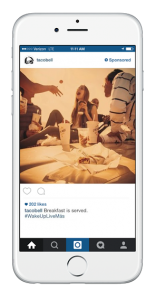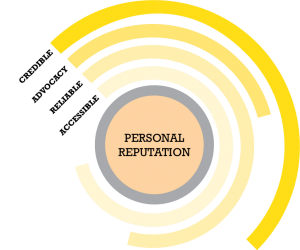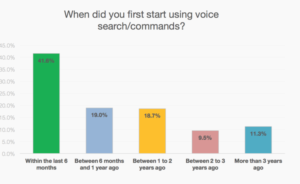
B2B marketers have greater challenges than their e-commerce counterparts when it comes to figuring out the optimal online experience. While e-commerce marketers have been striving to make their websites match their in-store experiences, most B2B marketers don’t have the benefit of such a parallel.
But the online experience is critical to get right. SiriusDecisions has reported that 67% of the buyer’s journey is now done digitally. B2B marketers still casting a single wide net, providing generic experiences to all site visitors, are seeing their lead flows dry up fast.
I’m sure you know what I’m talking about. The typical one-to-all experience that too many B2B websites count on include things like:
- A hero carousel that rotates through the company’s top five verticals
- A most recent blog post that’s only relevant to SMBs
- A case study featuring a healthcare client
- A 2-minute intro video, promoted prominently on the homepage, no matter how many times a visitor has watched it
Imagine if a visitor had the same type of experience at a conference or trade show. It might look like this:
A woman glances at the booth from afar. First, she reads the banner that describes your offering along with its benefits. When she approaches, the rep at the booth asks introductory questions such as what company she works for (ACME Bank) and her role there (CMO). The rep proceeds to show her a demo. When he’s finished with the demo, he insists on showing her the same demo again.
Confused, the CMO looks for some content. The rep tells her he has a brand new blog post on solutions for SMBs and that his featured case study is about a well-known healthcare client.
The CMO is busy and she doesn’t have time to look around for content specific to her needs, so she starts to leave. As she is walking away, the rep yells, “Wait, you forgot to give me your email address!”
If your website isn’t personalized, your visitors experience this kind of scenario every day.
B2B Website Must-Haves
Here’s how to avoid this awkward experience.
First, B2B marketers need to be able to understand and act on firmographic data immediately upon a visitor’s arrival without asking them to fill out a form. Second, marketers should build on this visitor insight by layering on behavioral intelligence to deliver a maximally relevant experience.
Firmographic Data: The Digital Equivalent of a Conference Attendee Badge
Much like a rep at a trade show can learn a lot about a visitor just from reading her badge the moment she arrives at the booth, you can leverage reverse IP-lookup technology to discover a great deal about a visitor even before she takes any action on your site. Actually, with this technique, marketers can leverage much more than just the basic company and industry information shown on a trade show badge. They have access to rich data points such as logo, employee count, revenue, and even martech stack.
With this capability, once you recognize, for example, that an enterprise financial services company is on your site, you can use a real-time personalization solution to drop your generic carousel and turn it into a single hero image calling out “Solutions for Financial Services,” swap the healthcare company case study for one highlighting a financial services client, and promote a blog post positioned for enterprise business instead of the one targeted at SMBs. All of this can happen the first time a visitor lands on your homepage – or any other page – to ensure she is immediately shown something she will be interested in.
Behavioral Intelligence: The Digital Equivalent of a Conversation
It’s no secret that the struggle with reverse IP-lookup data is firmographic data coverage. If your visitor is working from home or at the local coffee shop, you won’t be able to identify all of those data points from IP alone. You need a solution that can broaden your understanding of each individual with behavioral intelligence — much like a rep at a trade show deepens his understanding of booth visitors by having a conversation with them. For instance, understanding active time spent on an industry-specific page allows you to identify which industry a visitor is most interested in, so you can, in turn, deliver an industry-driven website experience.
The key to the behavioral component is using the data to identify your visitors’ pains. Understanding which keywords a visitor is arriving from, solutions they’re engaging with, and content they’re consuming to identify their preferences and intent is no different than having an introductory conversation at a conference booth.
For example, when a visitor is heavily engaged with blog posts about analytics and attribution, it’s the same as if they were telling us this information at a booth. They’re simply demonstrating their affinities and interests as opposed to voicing them out loud.
You should use behavioral data to make the experience for each visitor as relevant as possible, including removing messages and CTAs that don’t make sense for that visitor. If you know the visitor has already seen your intro video, why promote it again and again and again? And what about your customers? Why is Request a Demo the CTA if they already use your solution? Shouldn’t you be utilizing the website to promote and upsell newly released capabilities instead?
At a booth, you’d never try to keep showing a visitor the same thing over and over, so why does your website act this way? Instead, optimize the site real estate and offer a more meaningful and relevant piece of content that is going to further educate and drive the visitor down the funnel.
Conclusion
Researchscape recently found that 88% of marketers believe that their prospects expect a personalized experience. With today’s personalization platforms, this is not only possible, it’s simple. You just need a solution that allows you to easily modify your site experience for different audiences, like this:

Digital & Social Articles on Business 2 Community
(70)










